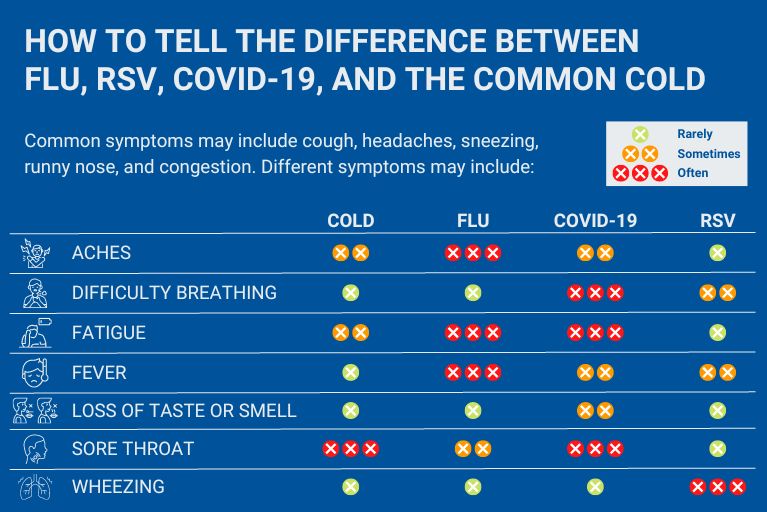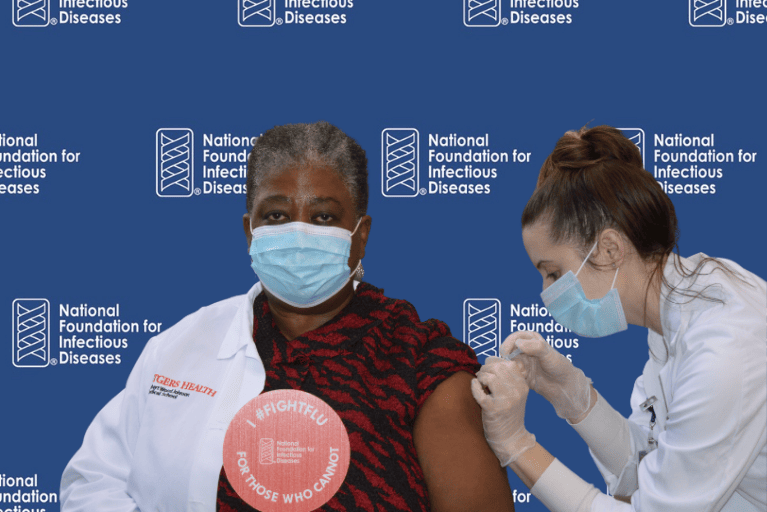Frequently Asked Questions about COVID-19
COVID-19 is a contagious disease caused by the SARS-CoV-2 virus.
COVID-19 most often causes respiratory symptoms similar to a cold, influenza (flu), or pneumonia but can also affect other parts of your body. Most people with COVID-19 have mild symptoms, but some people become severely ill.
More than 1 million people have died from COVID-19 in the US since the virus first emerged in Wuhan, China in December 2019.

General
Symptoms
Prevention
Testing
Treatment
Updated September 2024
Sources: American Academy of Pediatrics, Centers for Disease Control and Prevention, Food and Drug Administration
Learn more about coronaviruses at www.nfid.org/coronaviruses
Related Resources
2022 National Survey: Attitudes about Influenza and Pneumococcal Disease, and the Impacts of COVID-19
NFID 2022 National Survey on flu and pneumococcal disease in the context of COVID-19
How to Tell the Difference between Flu, RSV, COVID-19, and the Common Cold
Graphic listing common symptoms of respiratory viruses
Increasing Influenza (Flu) and COVID-19 Vaccination Rates Among US Black Adults
December 2021 survey assessing US Black adult (age 18-49 years) knowledge and attitudes toward influenza (flu) and COVID-19 vaccination






